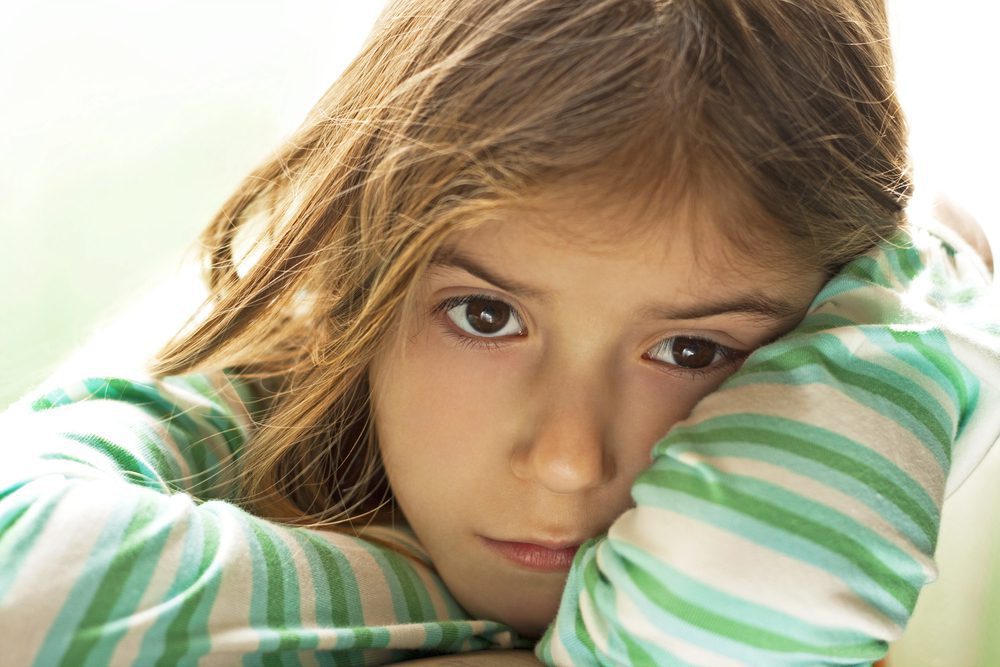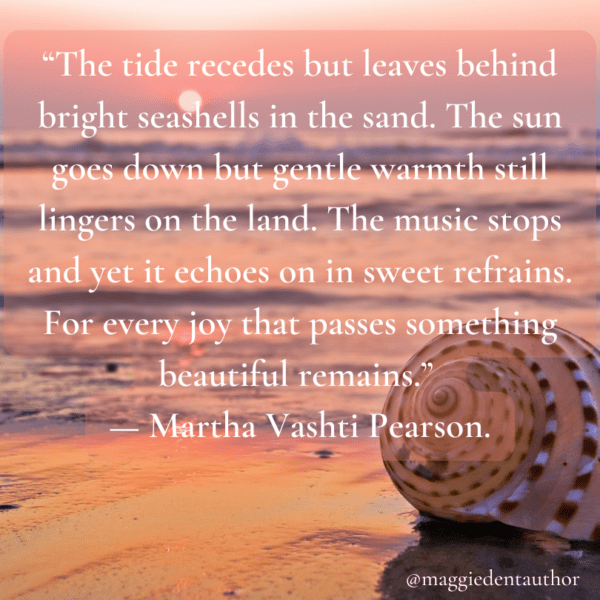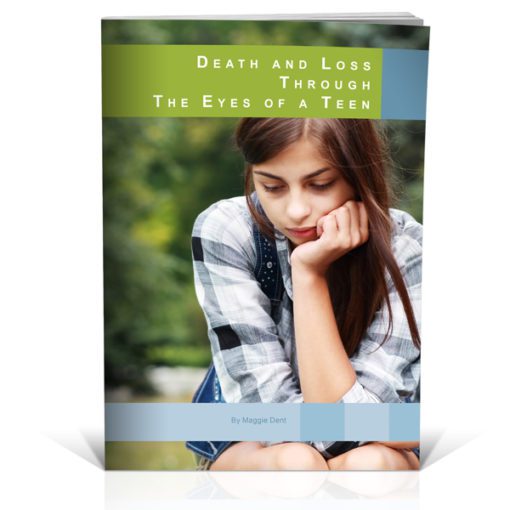Death & Loss, Posts for Parents, Posts for Teachers
Death through the Eyes of a Child

Trigger warning: this article talks about suicide and childhood trauma. Please take care in reading it and, if you need support, reach out to one of the services listed on this page.
I believe that imagination is stronger than knowledge
That myth is more potent than history.
I believe that dreams are more powerful than facts
That hope always triumphs over experience
That laughter is the only cure for grief
And I believe that love is stronger than death.– Robert Fulghum
Death hurts. When we lose someone or something we love, every level of us hurts and is affected. There is nothing that can prepare us for exactly what happens when a sudden loss occurs because every single person responds differently. There is simply no one right way to respond. What happens for children when a death occurs? How can you support them through the anguish and confusion? What can you do to prepare them in some way for this experience well before it happens? One thing you cannot do, no matter how much you wish you could, is take their pain away.
Sara’s story
Little Sara was only four and a half when she found her daddy just minutes after he had shot himself in their kitchen. This massive trauma changed her life forever. I was working as a counsellor at the time and Sara allowed me to share her journey of grief and healing over a few years. She was able to find the sparkle of innocence and happiness of childhood again, and her journey helped me more than any textbook on death and dying or any course or conference I had attended to understand death and the pain of loss through the eyes of a child.
She came to see me for the first time about a month after her father’s suicide. The most important thing I needed to be was safe for her. I had to ensure that she could not sense sympathy, or any rapport based on her being a poor thing. This is very difficult for those who are unfamiliar with death and grief. My prior experience in a hospice helping people, including children, to make the transition from this world, and my years working in a funeral home before I became a transpersonal therapist were essential in my work with children. However, to support her, I needed to provide a strong, open ground that allowed her to hold her emotional world in her own hands without it being contaminated or influenced by any of my personal attitudes. Sara’s journey with me took place over a couple of years and she was given permission to call the shots.
It was up to her when she came to see me. It was daily for a short time, then it was weekly on the same day. Then as time went by it was occasionally. Sometimes she just wanted to hear my voice to reassure her and remind her that she had things she could do herself to ease her emotional turmoil. Her mum would often chat on the phone to get the same reassurance that what was happening was normal because whatever happens must be seen as normal, no matter how strange it may seem at the time. This is especially important in the first 12 months.
Usually I began our sessions by taking Sara’s hand gently while still chatting to her mum outside my office. This gave her a chance to connect to me in her own way. The touch was simply gentle and safe.
My intention was always one of respect, kindness, and compassion, rather than one of intellectual or emotional adult superiority.
Sometimes she just hung onto my leg and gripped me very tightly. It was important that I was very consistent and reliable because the rest of her world was full of chaos and confusion so I always responded the same way as much as possible so that I was a safe harbour for her to moor her troubled little boat whenever she needed it.
The initial sessions always began with drawing on large pieces of paper, with a large choice of coloured felt-tipped pens or crayons and me on the floor beside her. I found it useful to use calming aromatherapy essences to create an atmosphere that was different to her home atmosphere, and I would often have simple nature sounds playing quietly in the background.
These sensory stimuli create soothing pathways for the brain, and in time Sara came to choose which ones she liked the most. She also asked to have the same essential oils for her bedroom and music and sound became a large part of her healing. These soothing stimuli allow the brain to release the chemicals or neurotransmitters that produce relaxing moods. Supporting Sara in feeling safe and connected in a similar way each time, brought a sense of predictability and unconscious comfort to her world.
Drawing, painting, clay play, and sand sculptures can give children a voice and an outlet for their grief.
Early on she just drew in black and her pictures were small and had sharp angles and pointy lines. While she drew during the first session, I asked her to share her story about how her daddy died.
I avoided platitudes like passing away or left our world because I wanted to be really honest with her and allow her to know the real words that explained what had happened.
She told me quite clearly and with very little emotion, which could have explained that she was still living outside her body. I asked her if she could easily see the scene of her daddy on the floor. She said that picture kept coming back and she hated seeing all that blood. It was important to help Sara replace those images in her mind and there are many NLP techniques and other transpersonal strategies that helped with this.
Together we created pattern interruption cues that she could use to distract her brain from latching onto the images that caused her distress. The event only happened once and yet her mind kept revisiting it, and each time it did so, the emotional centres of her brain were activated and the distress chemicals of cortisol and adrenalin flooded her body bringing painful feelings and emotions, making her feel awful again and again. Sara learned how to breathe out sadness (grey), anger (red), and fear (black) on her own. Her colours of feeling loved and safe were pink and yellow. We helped her mum to know that colours could change her moods and emotional states, and that together they could support her in having some influence over the negative feelings that swamped her.
Sara learned that it was safe to share her feelings and fears no matter how irrational they were. The sudden death of her daddy destroyed her perceived world. This means not only how she saw her world at the moment, but also how she saw it in the future.
This is a key reason why grief takes time because the mind has to rebuild a foundation for a new life, with a key person no longer in it. The trauma of the sudden death of a parent or sibling often triggers separation anxiety, even if children have grown past it prior to the trauma. They will often regress in other ways like bedwetting, talking in a baby-like voice and of course be very clingy. They can do the opposite and push everyone away, and become silent. Sara tended to do the latter.
Knowing that her mother was also struggling with the suicide, Sara pulled away and pretended that she was fine so that Mum could concentrate on her younger brother and the coming baby. Many children will assume a place of enormous responsibility to support a single parent and simply stop being a child. They constantly become peacekeepers, protectors or rescuers. This pattern can create enormous resentment in adolescence and early adulthood when they realise they lost their childhood well before they should have.
Sara developed an irrational fear that she would also find her mummy dead one day or that she would get killed in a car accident. This fear is very common in children and can be created by simply watching a TV show or a film that depicts a personal tragedy. This happens because children, especially under seven, have an under-developed sense of self, and of where their world begins and ends. Many children and teenagers have ended up with serious anxiety disorders because of the effects of external audio-visual trauma, hence concern about the unsupervised use of screens in children’s lives.
Responding to trauma
When a traumatic event occurs to young children, their immature brains go into emergency survival mode, much like it does for anyone of any age. Children’s brains do not have the same degree of emotional maturity as adults, which means that they are unable to reason, rationalise or problem-solve like adults. They are also unable to change their emotional states as well as adults, and they have different comforters than adults.
One of the most common responses to a major trauma in childhood is to energetically leave the body or dissociate because the pain is simply too great.
This also allows the body to numb the pain. This escape mechanism is a life-preserving survival process that happens unconsciously. Some adults who suffered trauma as a child often find it hard to experience any emotion – even happy emotions – later in their lives. Suppressed emotion will come out in some way – most often as anger, rage or inappropriate behaviour that will cause distress to those closest to them. Once again these are unconscious responses that happen without any conscious awareness and they are being activated by the deep human drive to survive before the other drives of being happy, successful or clever!
Sara split from her body for quite a few months. Occasionally during our sessions when we were using a visualisation activity she would return. However, the innate drive to keep her alive ensured that at the first sense of a threat she took flight from herself. It is essential with children who have a close death experience, to first build up their comforting and soothing mechanisms.
Any baby or child who is left in a chronically distressed state over a long period of time may sustain damage to key structures and systems in their developing brain. This can create an oversensitive stress response system that will stay with them for life and will increase their chances of depression, anxiety disorders, stress-related physical illness, and alcohol abuse later in life. Comforting, soothing and reassuring children activates dopamine, norepinephrine, and opioids in their brain, which diminish the feelings of fear and stress. Children need help and/or good modelling to do this normally, so when a crisis has happened they need even more support. So comforting is enormously important.
A whole family in grief
The difficulty when a death occurs in a family, is that all the key players in a child’s life are all struggling to meet their own needs at a very difficult time. Therefore, I encourage families to bunk down together. By this I mean bring in grandparents, aunts, uncles, and cousins to all come together, with mattresses everywhere and people everywhere for at least two weeks. This ensures that vulnerable children will find someone to hold them, hug them or take them to the park to give them a break. It can be very chaotic; however, the closeness allows everyone to help each other.
Grief is random and influences people differently and with lots of people around who have already been a part of children’s life, they will find someone to meet their needs. For them to feel abandoned at this highly challenging time, on top of losing someone they love, would make their journey of recovery even more difficult.
What other comforters and soothing strategies are helpful?
Continuing with their normal routine and boundaries is important. Stress is caused by a perception that we have no control over what is happening in our life and so to help children who are grieving, routine brings predictability. It is often good for them to go to their usual daycare or pre-school if they want to. Children are less able to stay as attached to a traumatic event as older children or adults. They live in the moment and so they can ask a question about what is going to happen to Daddy’s body and then ask “can I have an apple?”
Some children show no emotion at all when they are at funerals or at viewings because it is a whole new experience to them and their little brains are busy taking it all in. When their amygdala (the emotional gatekeeper of the brain) develops in adolescence, often there can be a flooding of grief and sadness around that loss. This is often when boys can suddenly become angry or aggressive out of the blue. The suppressed grief needs to be released.
It is often helpful to get a new comfort object like a cuddle blanket, a soft toy or a doll, which becomes a new friend. I would give the children I worked with a beanie bear the same colour as their love and happiness colour. They would see it as a connection to me and a source of comfort. There were many ‘Maggie Bears’ that literally fell apart after a year or so, and that too is perfect. This gave me another way of communicating with the child that provided more anonymity. “So how’s Maggie Bear been this week?” The parents of a child in this position should be very careful never to go anywhere without a few comforters for a child. They seek out this silent comfort and can be extremely distressed if they find themselves unprotected. They may think that their parents are a bit unreliable at this time, so other comforters are even more important.
Pets are fantastic, especially dogs. I have seen family pets soothe small children with the wisdom and empathy of an adult human!
They have a knowing that cannot be underestimated and will be there for their special ones with a rock solid unconditional-ness that we humans would find hard to match.
The wonderful vagus nerve’s role in comfort
When we physically comfort a distressed child we are activating portions of their vagus nerve that originates in the brain stem and connects many of the major organs of the body helping to regulate their function. This will re-balance the digestive system, heart rate, breathing, and the immune system. To activate that wonderful vagus nerve we first need to remove any threat or chaos.
With babies we know that at least four things that calm and soothe are massage, sucking, warmth, and movement.
These are a good place to start with children who have been distressed due to a death. Stroking, holding, carrying, caressing, and hugging are enormously soothing for everyone. And toddlers who had previously stopped breastfeeding, may request to suckle again. Allowing them to do so can be very healing.
I encourage adults to hold a child’s head with one hand across the forehead and one hand across the base of the head while the child is lying down. This is the position I used when working with children as it helps to activate emotional releases that are gentle and calming. I demonstrate this in this video:
Children often need small touches like a soft pat on the back, ruffle of the hair, and hands on shoulders without any words being spoken. The silent reassurance is something children respond to well because they are unable to communicate well about their heavy, uncomfortable feelings and yet they still know that you care and are connected. Adults tend to rely on words more than children can appreciate.
Unmet sucking needs in babies is often replaced by an oral neediness as children and adults. How many adults eat to comfort themselves emotionally? It is helpful to keep plenty of water easily accessible for children and simple refreshers like frozen fruit ices (without colourings and preservatives), cut up fruit and simple lollies like jelly beans, jelly babies.This may seem a bit strange and maybe unhealthy, however the brain uses so much energy to process a loss that low glucose levels often contribute to feeling lousy. The whole body is working overtime to overcome this trauma and additional glucose will help maintain better brain functioning as well as soothe the oral needs to comfort.
Being warm is also wired deep into our psyche as being essential for feeling safe and calm. This is partly due to the body’s innate way of managing major organs at the cost of peripheral circulation when a trauma occurs. By being warm or being wrapped in a blanket (or sometimes a jumper that belonged to the deceased) will help blood circulation and allow one to feel soothed. It helps if a child has had a special blanket from very early childhood that can become a very powerful ally for comfort during any trauma in life. I have a special nephew, now an adult, who kept a patchwork quilt I made for him as a baby on the end of his bed right through his teen years! He still will not throw it out.
Another soothing activity is rocking or swinging. Sometimes, even with adults, I simply hold them and gently rock them while they process irrational feelings that appear around a loss often with no words at all.
I believe that what comforted us as babies will always work no matter how old we are!
Avoiding over-stimulation of any kind is also very helpful in soothing and comforting children. Avoiding talking too much, asking too many questions and doing too much and allowing time when they can chill out in their own space are also important. This is where soothers from earlier in life come into play. Children who have used calming audios as babies or toddlers find these to be enormously helpful because their brains are already wired to feel comforted by the very first sounds of their favourite tracks. Sometimes they get relief for a time watching a favourite video from childhood like The Lion King or Finding Nemo. New films will actually add to their stress levels because their brain will have to work harder to find meaning and to follow the plot. A familiar video allows them to disappear without having to use their thinking skills at all.
The role of imagination in grief
Children’s imagination’s have always been a significant way to protect and insulate them from the adult world. Never is this more important than when a death occurs. Some of the comforting symbols or metaphors that comfort children are ones that symbolise that a connection to a loved one continues after death. This would include rainbows, wishes, magic balloons, angels, butterflies and stars.
I still have a vivid image of a funeral I conducted for a pre-school teacher who had been killed in an accident. She had sung Twinkle, Twinkle Little Star many times to her preschoolers prior to her death.
A message I was asked to read from her little students mentioned “and we will know that when we look up into the night sky, you will be the brightest star shining down on us and smiling, just like you always did…”
After the coffin had been lowered into the ground many of the little students dropped beautifully painted stars in to the grave, and blew kisses to say goodbye. This imaginal influence also helps to create light moments that help people to laugh and is very helpful in releasing sadness and grief. One little lad at a funeral once whispered to me, “Maggie, is heaven as far as London?” Another little lad turned to me and asked if God had M&Ms because his Nan loved them. A little girl asked if there was a phone she could use to talk to her Poppy because they spoke weekly and she wanted to continue.
It is also very helpful to create a special place, real or imagined, or both, where children may go whenever they want to have a chat with their loved one. They can imagine being there and then invite their loved one to play, have an imaginary meal or simply chat with them. The brain can’t distinguish between real or imagined images so it feels real to the child, very real. This can ease the profound sense of loss that accompanies a death. These imaginary activities soothe and calm the brain just like the previous strategies.
Allowing children to participate in the preparation for a funeral can also be helpful. They can write letters saying the things that may not have been said, or say them again. Essentially their loved one is about to go on a journey that they will not return from. This last journey metaphor gives parents a chance to engage the child. What would they like to accompany Daddy? Some want to include photos of them, special paintings or drawings, small toys or teddies, little cars, favourite chocolates, cans of beer – anything that they knew were a positive part of that persons life.
My dad had nicknamed my youngest blue-eyed son Gumnut and when he died suddenly when James was just six years old, he searched to find a bunch of gum nuts to place in his Pop’s coffin so that Pop would remember him. That felt appropriate to him. Children show incredible insight and thoughtfulness when engaged in this way. Another family I supported had been serious Scrabble players and they included a Scrabble board with words glued on the board like: “We will always love you Mum” and “Best Mum ever.”
Children are aware that coffins either get burnt or stay buried in cemeteries; however, the mere act of giving special things to help the journey still brings comfort. This is how the imagination insulates and protects children from the harsh reality and pragmatism of the adult world.
Change, loss and death will happen to everyone at some point in life. The ability to cope with and conquer these adversities is what resilience is all about. Children are children, not little adults, and they need to be allowed to experience setbacks as children. Unfortunately the experience of overcoming the crushing effects of a death is the best teacher on how to do it. Little Sara walked every torrid step of her journey with loving support and lots of the things that help children. She forgave her daddy and she learnt about death, funerals, mental illness, the power of her imagination, and that love continues beyond death.
For a full list of books and other resources to help support children around death, loss and illness, visit here.

Feature image © By panco /Depositphotos.com
Meme image: © mishoo from Getty Images/Canva.com






